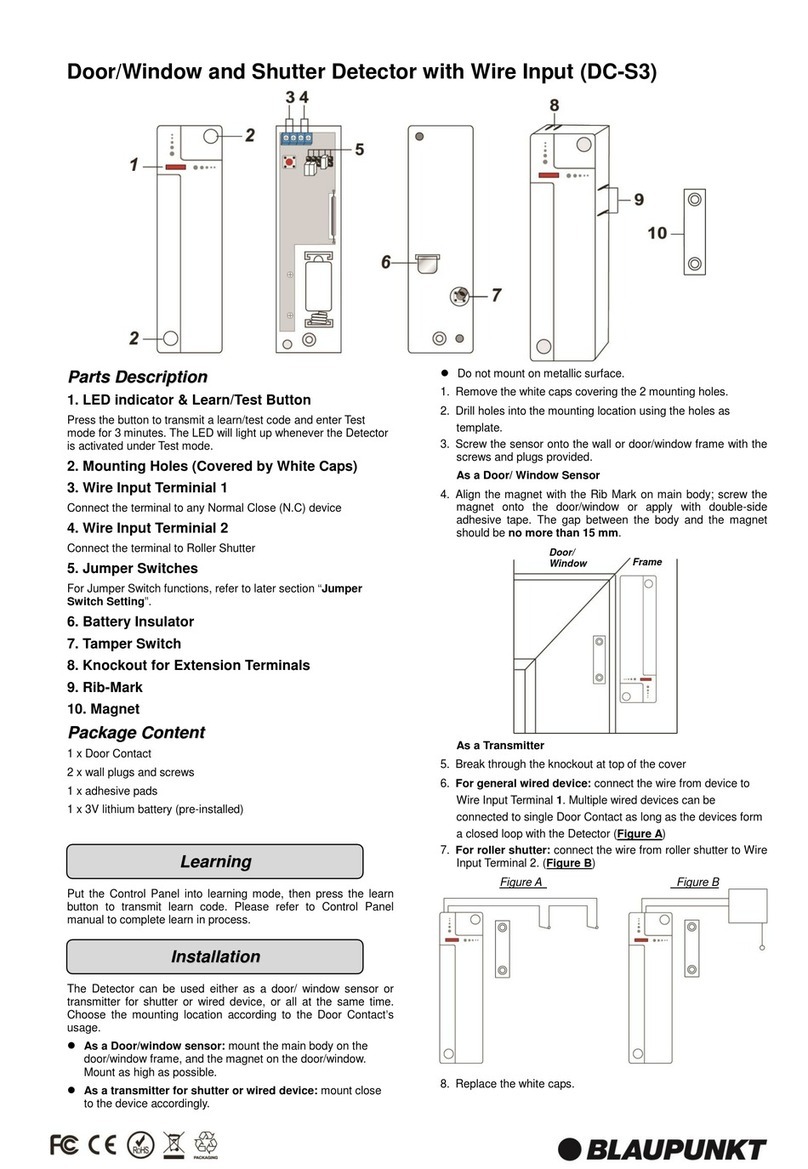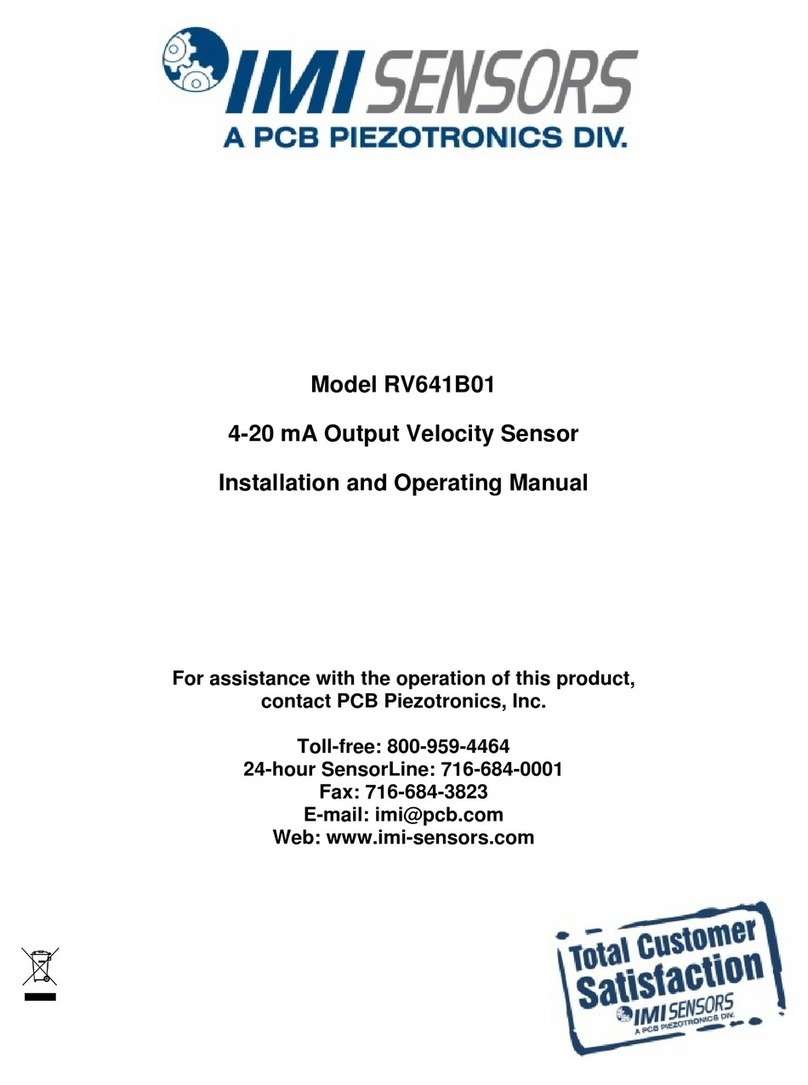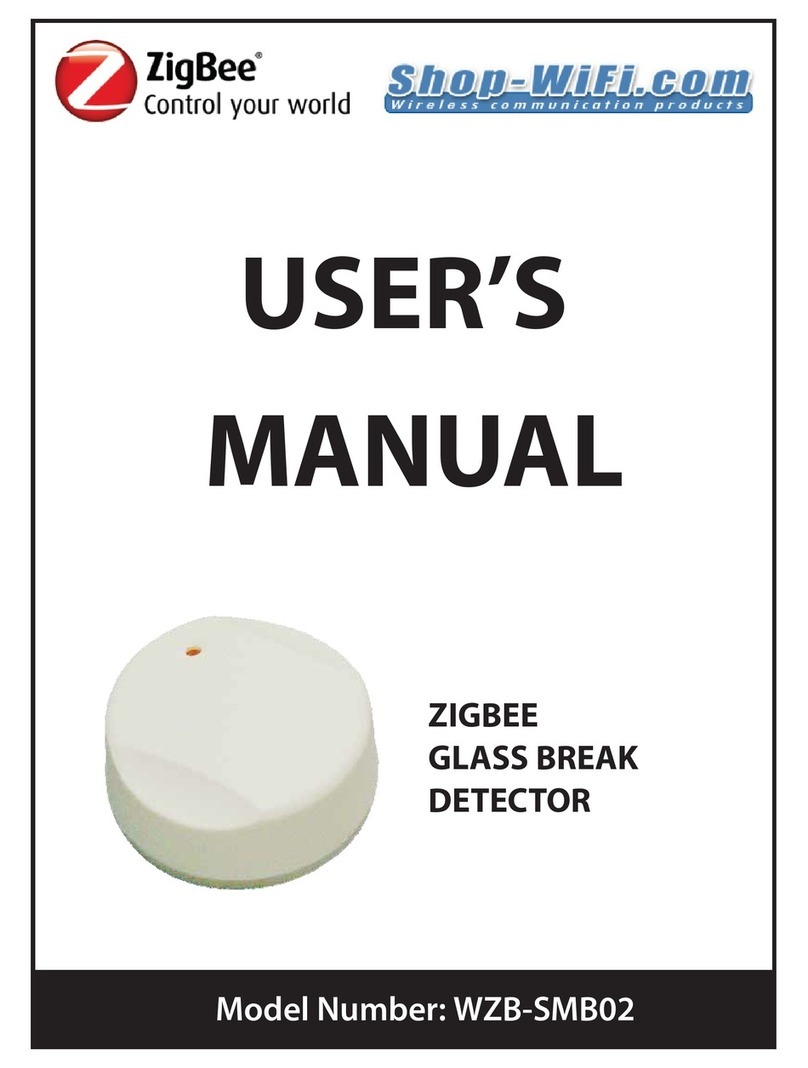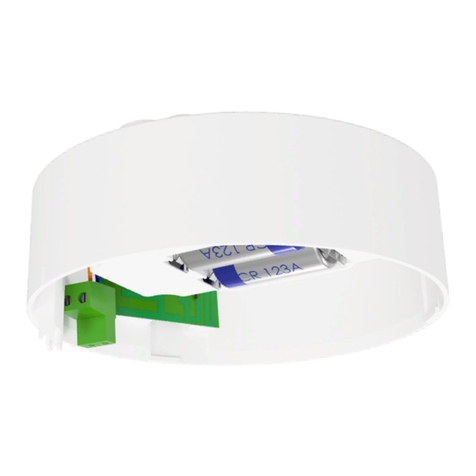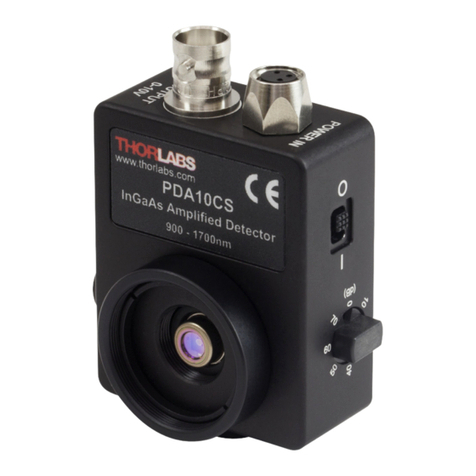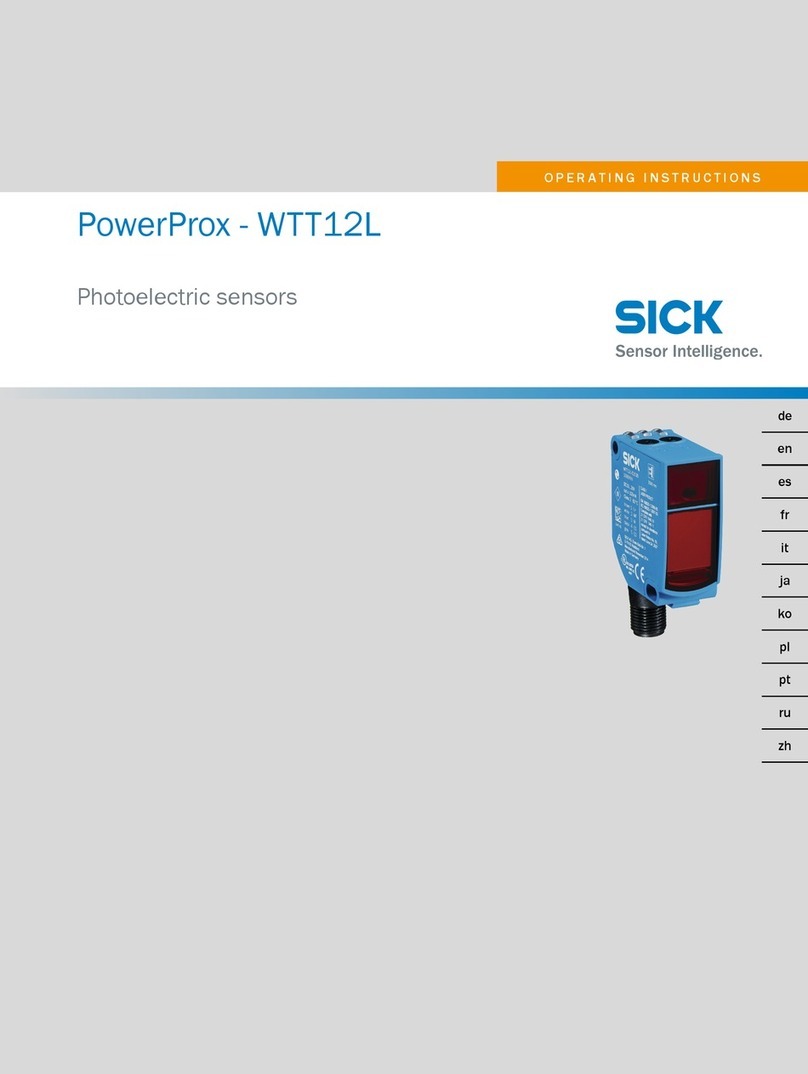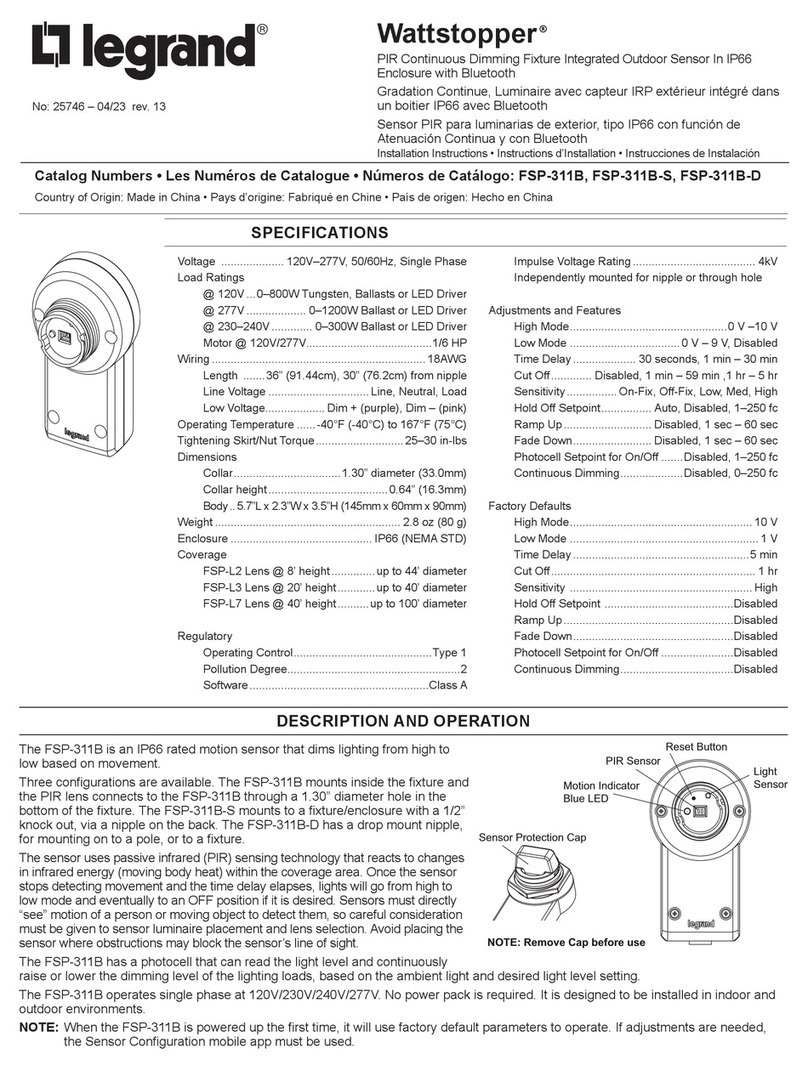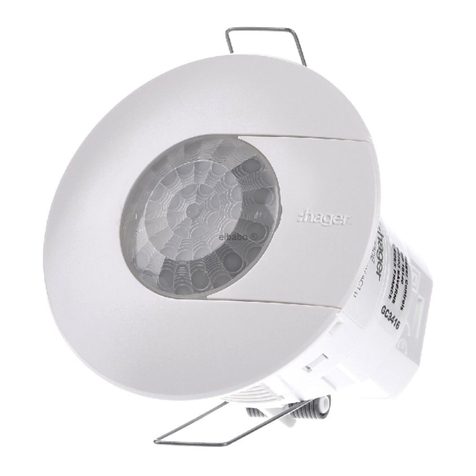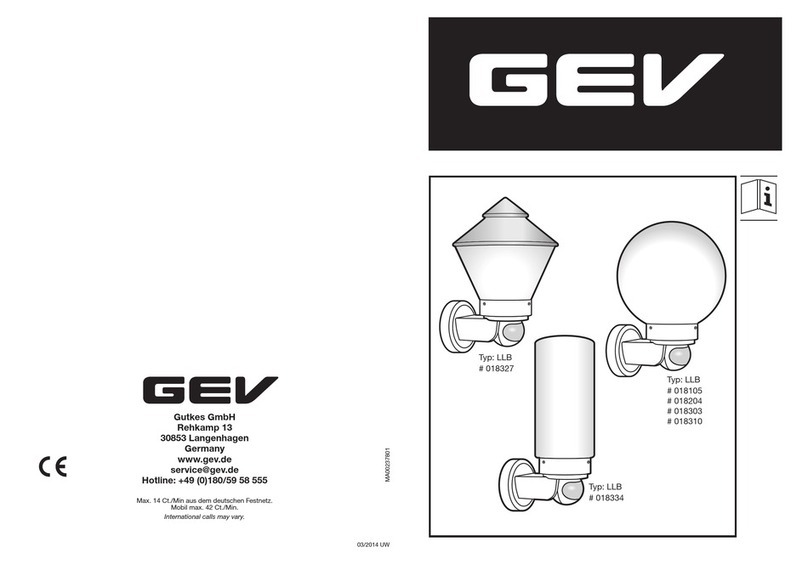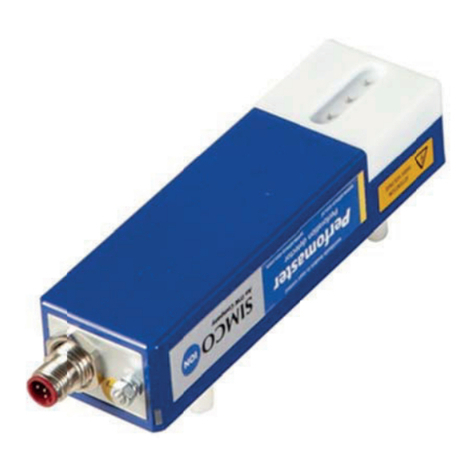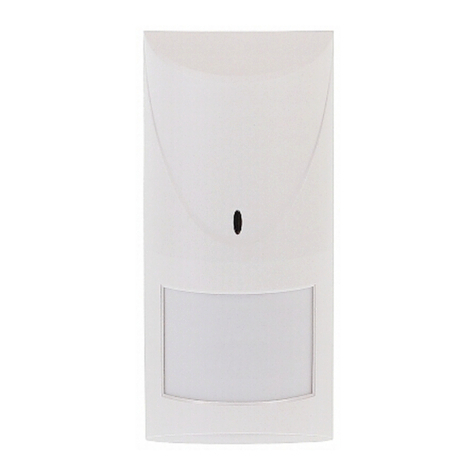Energy Absorption Systems Safe-Stop 180 Guide

Safe-Stop
®
180 TMA
Compact TMA That Meets NCHRP 350, TL-3
Installation/Operation
(Model 9180)
Corporate Offices:
35 East Wacker Dr., 11th Floor
Chicago, IL 60601-2076
Telephone: (888) 323-6374
FAX: (312) 467-1356
http://www.energyabsorption.com/
Engineering and Manufacturing Facilities:
Rocklin, CA
Pell City, AL

Safe-Stop®180 TMA
2
Table of Contents
Functional Description ....................................... 2
Safety Instructions .............................................. 3
Installation ......................................................... 8
Operation Instructions ....................................... 21
Limitations & Warnings ..................................... 22
Maintenance ...................................................... 23
I. Routine maintenance................................ 23
II. Detaching and Attaching......................... 25
III. Lubrication.............................................. 27
IV. Technical specifications ........................... 28
Repair ................................................................. 29
I. Post Impact ............................................... 29
Troubleshooting Guide ........................................ 34
Installation Drawings ........................................... 42
ImporImpor
ImporImpor
Important Intrtant Intr
tant Intrtant Intr
tant Introductoroductor
oductoroductor
oductory Notesy Notes
y Notesy Notes
y Notes
This manual contains important information on the
Safe-Stop 180 TMA (Truck Mounted Attenuator). Proper
installation and operation of the Safe-Stop 180 TMA is
essential to assure maximum performance. Take the time
to review this entire manual thoroughly prior to install-
ing and/or operating the Energy Absorption Systems, Inc.
Safe-Stop 180 TMA.
If you need additional information, or have any questions
about the Safe-Stop 180 TMA, please call Energy Absorp-
tion Systems' Customer Service Department at 1-888-
32-ENERG.
RETURN GOODS POLICY
Before returning any goods for credit please contact
Energy Absorption Systems Inc. Customer Service
Department at 1-888-32-ENERG or your local
distributor for proper instructions.
FF
FF
Functional Descriptionunctional Description
unctional Descriptionunctional Description
unctional Description
The Safe-Stop 180 TMA is a Truck Mounted Attenuator
designed to reduce the risk of injury to passengers of an
errant vehicle and to the driver of the truck to which the
system is attached. The system mounts on the rear of a
truck and may be used in stationary applications, such
as a truck blocking a work zone and mobile operations,
such as striping, sweeping, plowing, etc.
The Safe-Stop 180 TMA consists of the following basic
components: a collapsible frame assembly; two crush-
able cartridges; a support structure; an impact face and
an underride (see Figure 1).

3
SS
SS
Safety Instructionsafety Instructions
afety Instructionsafety Instructions
afety Instructions
For maximum safety, the operator should stand at the rear of the truck, on the curb side, (see Figure 2). When tilting
the TMA, care should be taken to stay clear of all moving parts.
CARTRIDGE B ASSY CARTRIDGE A ASSY
SUPPORT STRUCTURE
SOCKET HITCH UNDERRIDE
REAR OF TRUCK
Figure 1
Figure 2
STAND HERE (FOR CONTROLS
ON RIGHT SIDE OF TRUCK)
MOVING PARTS DURING
FULL DESIGN IMPACTS AND
FOLDING OPERATION
CONTROLS
CONTROLS MAY BE
RELOCATED TO THIS SIDE
STAND HERE (FOR CONTROLS
ON LEFT SIDE OF TRUCK)
CARTRIDGECARTRIDGE
TRUCK

Safe-Stop®180 TMA
4
1. The TMA should be rigidly fastened to the truck. In the
horizontal position, the bottom of the TMA should be
280 to 330 mm [11" to 13"] from the ground and level
(see Figure 3). *The TMA should be left in the folded
position whenever it is not being used as an impact
attenuator. The TMA can only absorb the energy of an
impacting vehicle in the unfolded position.
2. Jacks may be used to support the folded TMA when
it is off the truck. The jacks must be stored while the
TMA is attached to the truck. The jacks can be stored
on the brackets provided on the support frame. (See
Figure 3). If you are subject to vandalism, prepare
another storage plan.
PIVOT PIN
RETAINING PIN
Figure 4
305±25 mm [12"±1"]
Figure 3
305±25 mm [12"±1"]
STORE JACKS HERE WHILE
TMA IS ATTACHED TO TRUCK
3. Make sure all pivot pins are in position and that all
retaining pins are installed correctly (see Figure 4).
SS
SS
Safety Instructions (cont’afety Instructions (cont’
afety Instructions (cont’afety Instructions (cont’
afety Instructions (cont’d.)d.)
d.)d.)
d.)
*The Safe-Stop 180 TMA shall be employed in the un-
folded position: At all times while operating as either a
Barrier Vehicle or Shadow Vehicle.
The Safe-Stop 180 TMA should be in the "unfolded" po-
sition when: Transporting short distances at a low speed,
Transporting at a speed much lower that adjacent traffic,
and Transporting in areas where vehicle ride characteris-
tics and maneuverability are maintainable.
The Safe-Stop 180 TMA should be in the "folded" posi-
tion when: Transporting long distances at a high speed,
Transporting at a speed near the speed of adjacent traf-
fic, and Transporting under conditions of compromised
maneuverability typically when the large turning radius
clearance needed for the extended TMA is not safe.

5
4. The Safe-Stop 180 TMA is designed to safely absorb
a crash, and to support its own weight. Do not drag
the TMA or place anything on its top: damage may
result. Do not sit, stand or lean on any part of the
TMA (see Figures 5 & 6).
Figure 6
Figure 5
5. Before raising or lowering the TMA, the operator
should be trained as to its proper operation. Refer
to the Operation Instructions in this manual.
6. Folding the TMA provides the best maneuverability
and driving characteristics. It is permissible, during
restricted city driving and high-speed travel, to have
the TMA folded to its 180° position. Refer to local
agency policies as required for additional guidance.
Unfold the system either before, or as soon as pos-
sible after, entering a job site or beginning shadow
vehicle operations. Remember that it is recom-
mended that the support vehicle be stopped for TMA
folding and unfolding.
Figure 7
NO ONE TO BE ALLOWED BEHIND ELEVATED TMA
7. Be sure all persons are standing clear before folding
or unfolding the TMA. Be sure the system is stopped
in full folded position before allowing anyone directly
behind the folded system (see Figures 7 & 9).
8. Ballast and other heavy objects MUST BE ADEQUATELY
ANCHORED to the truck to prevent shifting during an
impact. (The force on the tie-down straps could be 20
times the weight of the ballast.)
Figure 8

Safe-Stop®180 TMA
6
14. This system is a crash cushion and is therefore used
in high risk areas. Stay clear of traffic whenever pos-
sible. If an accident is to occur, even during a design
impact, there may be fragments from the truck or
impacting vehicle that could cause injury.
15. The hydraulic assembly was designed to fold and
unfold the TMA system as described. Any other use
may be hazardous to people or equipment.
• Do not use the system to push a load.
• Do not use the raised end of the system to sup-
port any load.
• Do not use any part of the TMA for towing or
hauling a load. This could cause the lift mecha-
nism to malfunction, and may reduce the impact
performance.
16. The system must be in the unfolded position to per-
form properly during an impact. Do not leave the
system raised, even slightly, when on the job.
17. Be sure the truck is appropriate for attaching a TMA.
See the installation section for further details
Definition-The BARRIER VEHICLE is the truck on which
a TMA is mounted, while positioned upstream (towards
the direction that traffic is approaching) of a work zone.
The SHADOW VEHICLE is the truck on which a TMA is
mounted, which is following behind a moving operation
such as striping, spraying, etc.
9. The agency responsible for the truck should inspect it
for adequate operator safety equipment (e.g., seat belts,
head rests, etc.)
10. It is recommended that the Safe-Stop 180 TMA be
mounted to trucks between 7300 kg [16,090 lbs.] and
9000 kg [19,845 lbs.] for optimum impact performance.
This weight includes both the truck and the TMA.
11. Make sure that the performance and safety of the TMA
is not impaired by damage or corrosion.
WARNING!
Failure to comply with these instructions can result in
improper TMA performance and possible personal
injury. This TMA is intended to be used as a crash
attenuator on the rear of trucks which meet the design
specifications for this system.
12. Regular maintenance of the TMA is important for safe
use. Refer to the maintenance section of this manual
for additional information.
• Regular inspection of frame members, cartridges
and pins is necessary to ensure proper system per-
formance.
• Regular inspection of hoses is important. A bro-
ken or damaged hose will cause the system to quit
functioning properly.
• Keep electrical connections at the pump motor/so-
lenoid clean to prevent arcing. Clean any hydraulic
spills or leakage to prevent bodily injury, fire, etc.
13. The driver should be extra cautious while backing
the truck with the TMA in the up or down position,
so that injury and/or damage will not result.
SS
SS
Safety Instructions (cont’afety Instructions (cont’
afety Instructions (cont’afety Instructions (cont’
afety Instructions (cont’d.)d.)
d.)d.)
d.)

7
THE USE OF A TMA ON THE BACK OF A TRUCK WILL:
• Gradually stop the impacting vehicle*
• Protect the occupants of the impacting vehicle *
• Protect the shadow vehicle occupants*
• Reduce damage to the shadow vehicle*
WILL NOT:
• Affect the skid (roll ahead) distance of an impacted
truck (see figure 9). KEEP WORK CREWS CLEAR!
CONTROLLING SKID DISTANCE (ROLL AHEAD):
• Skid distance is significantly increased and is less
predictable for lightweight shadow vehicles
• Skid distance is reduced and is more consistent
when heavier shadow vehicles are used.
• Preferred truck GVW rating is:
7300 kg [16,090 lbs.] to 12 000 kg [26,460 lbs.]
• Recommended Curb Weight is:
7300 kg [16,090 lbs.] to 9000 kg [19,845 lbs.]
*DESIGN SPEED IMPACTS:
• 100 km/h [62 mph] for 820 and 2000 kg
[1808 and 4410 lbs.] vehicles.
Figure 9
SHADOW VEHICLE
SKID DISTANCE
SKID DISTANCE
TMA
WITH TMA
WITHOUT TMA
SAME

Safe-Stop®180 TMA
8
Installation InstructionsInstallation Instructions
Installation InstructionsInstallation Instructions
Installation Instructions
Read and understand all instructions before beginning
installation.
The truck rating (GVW) should be 7300 kg [16,090 lbs.]
min. The weight of the vehicle should be between 7300
and 9000 kg [16,090 and 19,845 lbs.] for optimum im-
pact performance.
The system must be attached to the truck by welding
parts to the frame. Do not weld forward of the rear leaf
spring hangers to ensure structural integrity of frame.
Use AWS qualified welders to ensure durable attachment
of the TMA system.
The truck frame must be suitable and accessible for
mounting a TMA system. If there are any questions re-
garding the suitability, contact the Customer Service De-
partment for assistance.
1) Shipping list
Check the shipping list against the actual parts to make
sure all items were received. Review the drawing pack-
age and familiarize yourself with the assembly and part
numbers.
2) Assemble Necessary tools:
RecommendedRecommended
RecommendedRecommended
Recommended
TT
TT
Toolsools
oolsools
ools
1. Welding equipment (for 1/2" plate) GMAW or SMAW
2. Cutting torch
3. Hammer
4. Drift pin or alignment pin (12” long)
5. Tape measure
6. 1/2" drive socket wrench w/6” extension
7. 1/2" drive sockets (9/16", 1-1/8", 1-1/2", 9/16” deep well)
8. Open end wrenches (9/16", 1-1/8", 1-1/2")
9. 12" crescent wrenches - (2)
10. Marking implement (pencil, soap stone)
11. Floor jack
12. Drill motor for 13/16" diameter bit
13. 13/16" diameter bit and pilot drill for same
14. Center punch
15. Torque wrench - 120 Nm [90 ft-lbs.]
16. Hydraulic fluid (use Dexron® III fluid only)*
*Shipped with system
17. Forklift
PP
PP
Preparationreparation
reparationreparation
reparation
3A) Installation Must Be Performed On A
Level Surface
The system’s framework is very heavy and pivots in sev-
eral areas. Until the framework is secured with the cables,
it can swing out in an approximate 4 m [13’] radius from
either side of the truck. A level surface is required to
maintain control of the framework when it is being ex-
tended to its full length.
3B) Truck ballast
Use a bubble level to verify that the truck is parked on a
level surface. The truck should be as close to the final
driving weight as possible. If ballast must be added to
achieve the 7300 kg [16,090 lbs] minimum weight, add
it at this time. Ballast must be properly anchored to the
truck to keep it in place during an impact. Ideally, an
adequately sized truck, that requires no ballast, should
be used. Because the 953 kg [2100 lb] weight of the
rearward protruding TMA is supported by the back of the
shadow vehicle, care must be taken not to exceed the
manufacturer's published maximum axle loads. To en-
sure that the driving characteristics of the vehicle are
maintained, the manufacturer's recommended center-of-
gravity zone should also be adhered to.
4) Check for interference
Before attempting to install the underride, check for in-
terference problems.
The System folds such that the impact face is very close
to the mounting location. See Figure 32 page 28. If you
are using something other than a standard socket re-
ceiver hitch underride refer to special instructions sup-
plied with your assembly then skip to step 8.
Temporarily position the underride socket receiver under
truck frame as shown (refer to Figure 12) and check for
interference problems. Interference problems with tail
lights, springs, dump bodies (in the up or down posi-
tions), etc., should be corrected before proceeding.

9
5) Underride Assembly
With the truck at its actual driving weight, parked on a
level surface, measure the distance from the ground to
the bottom of the truck frame. A distance of 711±25 mm
[28±1"] is required. Spacers may be added to the bot-
tom of the frame to achieve this height (see figure 13
and the Underride Assembly drawing on page 47).
Note: The truck’s springs may settle with the
weight of the TMA, sometimes, as much as 50 mm
[2
"
]. Adjust the height to compensate for antici-
pated settling.
Measure from the back end of the frame forward to the
rear-most leaf spring hanger, or any other obstruction
on the bottom of the frame that may interfere with the
socket receiver. A minimum of 305 mm [12"] is required
(see the Underride Assembly drawing on page 47).
Position the socket receiver at the rear end of the frame so
that the 76 x 387 mm [3 x 15 1/4"] flat bar is along the
outside of the frame member and the socket receiver tube
is flush with the end of frame. If spacers are required,
weld them to the receiver tube and lap the spacer splices
(pieces of 10 x 51 x 103 mm [3/8 x 2 x 4"] flat bar) across
the socket receiver tube and spacer at the rear-most loca-
tion (see underride assembly drawing). The top of the
socket receiver tubes must be 711 ± 25 mm [28 ± 1"] from
the level ground for proper system height (see Figure 12).
Weld the socket receiver tube to the bottom of the truck
frame with the 76 x 387 mm [3 x 15 1/4"] flat bar on the
outer side of the frame (see Figure 11).
Note: All welding must be performed by a welder
certified to AWS D14.3-82 or AWS D1.1 in accor-
dance with the underride drawing.
CAUTION: The truck frame is high carbon steel.
To avoid cracking, do not weld, or apply ex-
cessive heat, to the bottom flange, forward of
rear-most leaf spring hangers.
Prime and paint all welded areas.
STEPS
4 & 5
STEP
6
STEP
7
ATTACHMENT
ASSEMBLY
SUPPORT
FRAME
STEP
12
STEP
11
STEPS
8 & 9
UNDERRIDE
SOCKET
RECEIVER
SUPPORT
MOUNT
Figure 10
TRUCK FRAME
FLAT BAR
UNDERRIDE
SOCKET
RECEIVER
Figure 11
Figure 12
864 mm [34"] NOMINAL
710 mm [28"]
NOMINAL
TRUCK
FRAME
FLAT BAR
UNDERRIDE
SOCKET RECEIVER
STEP
10

Safe-Stop®180 TMA
10
Installation Instructions (cont’Installation Instructions (cont’
Installation Instructions (cont’Installation Instructions (cont’
Installation Instructions (cont’d.)d.)
d.)d.)
d.)
762 mm ± 25 mm [30" ± 1"]
711 mm ± 25 mm [28" ± 1"]
LEVEL GROUND
SPACER TUBES
SPACER SPLICE
(USE ONLY ON
REAR SPACER TUBE)
FLUSH WITH
END OF FRAME
UNDERRIDE SOCKET RECEIVER
Note: Left and right underride socket receivers
must be parallel with each other and level.
TRUCK FRAME
Figure 13
Socket Hitch (Left Side Shown)
WITH SPACERS WITHOUT SPACERS
LEVEL GROUND
UNDERRIDE SOCKET RECEIVER
TRUCK FRAME
6) Socket Hitch Assembly
Install the socket hitches and pin them into place
using the 1 x 6 ¼" hitch pins and retainer pins
shipped with the system.
SOCKET HITCHES
HITCH & RETAINER PINS
Figure 14

11
7) Mount the Attachment Assembly to Socket Hitches
Mount the attachment assembly to the socket hitches as shown in Figure 15. Shims are used to level the system. It
is recommended that ¼" shims be used initially. This may be adjusted once the system is assembled.
SUPPORT BRACKET
1/4" SHIM (ONE PER SIDE RECOM-
MENDED AT INITIAL SETUP. LEVEL
THE TMA BY ADJUSTING THE
NUMBER OF SHIMS)
3 1/4" X 3 1/4" BAR WASHER
2 1/2" X 3 1/4" BAR WASHER
Figure 15
1X3 1/2" HEX BOLT
1" FLAT WASHER
1" LOCK WASHER
1" HEX NUT
1" FLAT WASHER
SOCKET HITCH
12GA SHIM

Safe-Stop®180 TMA
12
8) Attach the Support Frame / Backup to
the Attachment Assembly
Move the system to the truck and pin the support
frame/backup assembly to the attachment assembly,
as shown in Figure 16. The assembly is to be installed
while frame is still collapsed with forklift slings sup-
porting the system. Use the upper set of mounting
holes for the attachment.
Figure 16
BACKUP ASSEMBLY
HITCH PIN WITH
HAIR PIN COTTER HITCH PIN WITH
HAIR PIN COTTER
*SHIMS, 1/4" X 5" X 10"
*SHIMS, 12GA X 5" X 10"
*USE SHIMS AS NECESSARY TO ACHIEVE
PROPER SYSTEM GROUND CLEARANCE
SUPPORT BRACKET (RIGHT)
SUPPORT BRACKET (LEFT)
BAR WASHER
1/2" X 2 1/2" X 3 1/4"
BAR WASHER
1/2" X 3 1/4" X 3 1/4"
BAR WASHER
1/2" X 3 1/4" X 3 1/4"
1" HEX NUT
1" LOCK WASHER
1" FLAT WASHER
1" X 3 1/2" HEX BOLT, G8
1" FLAT WASHER
1" X 3 1/2"
HEX BOLT, G8
1" FLAT WASHER
SUPPORT MOUNT (LEFT)
SUPPORT MOUNT (RIGHT)

13
Figure 17
9) Extend the Support Frame
With the TMA pinned to Attachment Assembly, slowly
and evenly pull the frame out to its full extent.
WARNING!
Even when supported by forklift, frame
can be unwieldy. Use extreme care.
WARNING!
Until the cables are installed, the system
may shift to one side.
ALIGNMENT CABLES
ALIGNMENT CABLES

Safe-Stop®180 TMA
14
10) Install the Bottom Release Cable
across the Arm Assemblies.
Verify that the frame is extended as far as it will go. In-
stall the Bottom Release Cable across Arm Assemblies.
(see Figure 18). Torque the nuts to 34 Nm (25 ft-Ibf) mak-
ing sure that roughly an equal amount of threads pro-
trude from nuts on both ends of cable. Lock cable in place
using remaining fasteners as "jam" nuts.
WARNING!
For proper System performance, only use Release
Cables supplied by Energy Absorption Systems, Inc.
Failure to use the correct equipment could lead to
fatigue or result in poor System performance.
Figure 18
RELEASE CABLE
TORQUE TO 34 NM (25 FT-LBS.)
TORQUE TO 34 NM (25 FT-LBS.)
Installation Instructions (cont’Installation Instructions (cont’
Installation Instructions (cont’Installation Instructions (cont’
Installation Instructions (cont’d.)d.)
d.)d.)
d.)

15
11) Install Cartridges
Remove one end of each alignment cable from the TMA
and set aside to clear the top side of each bay. Using a
forklift and sling, place Cartridge B in position and se-
cure it using the rubber washers, flat washers, lock wash-
ers and nuts provided. Rubber washers should be in-
stalled closest to the steel frame, one on each side, be-
tween the cartridge and fasteners. Torque the nuts to
27 ± 7 Nm [20 ± 5ft-lbs.] Repeat procedure for Cartridge A
(see Figure 19).
Figure 19
CARTRIDGE B
CARTRIDGE A
12) Install the Top Release Cables across
the Arm Assemblies
Install the top release cable across the arm assemblies
(see Figure 18). Torque the nuts to 34 Nm (25 ft-Ibf),
making sure that roughly an equal amount of threads
protrude from nuts on both ends of cable. Lock cable in
place using the remaining fasteners as "jam" nuts.

Safe-Stop®180 TMA
16
SOCKET HITCHES NOT
SHOWN FOR CLARITY
A
B
C
D
Figure 20
13) Reinstall and Adjust the Alignment
Cables
There are four alignment cables (two for each bay). Reat-
tach the alignment cables as shown in Figure 20. Measure
the diagonals of each bay and adjust the cables so that the
diagonal measurements in each bay are the same within the
given tolerance
(A = B ± 5 mm [3/16"], C = D ± 5 mm [3/16"])
and taught.
Cables are "taut" when they deflect 38 mm - 50mm
[1 1/2" - 2"] when pressed by hand at the midpoint. Lock
each cable in place using the second nut as a “jam nut”.
Installation Instructions (cont’Installation Instructions (cont’
Installation Instructions (cont’Installation Instructions (cont’
Installation Instructions (cont’d.)d.)
d.)d.)
d.)

17
14) Install and Tension the Cartridge Sup-
port Cables
There are six cartridge support cables. Install the cables
as shown in Figure 21.
Attach thimble end of all cartridge support cables to the
intermediate frame using the provided shackles. Pass the
stud end of the cable through the corresponding cartridge
chain loop, and attach as shown in Figure 21 using a die
spring, washer and nuts.
To properly tension the cartridge support cables, tighten
the first nut on one cable until all slack is removed, then
tighten it until the tensioning springs have been com-
pressed to 32 mm [1 ¼"] in height. Lock this nut in place
with the second "jam" nut. Repeat this procedure with
the other cables.
15) Adjust the Height and Levelness of the
System Frame
Verify that the system frame is 305 ± 25 mm [12" ± 1"]
from the ground at the front and rear of the system. It
may be necessary to add shims to the socket hitch in
order to adjust the levelness of the cartridge. See Fig-
ures 21 & 21a.
SHACKLE
CARTRIDGE
SUPPORT CABLE
32 mm [1 1/4"]
WASHER
NUTS
Figure 21
305 mm ± 25 mm [12" ± 1"]
SOCKET HITCH
SHIMS MAY BE ADDED OR REMOVED
HERE AS NECESSARY TO ACHIEVE
LEVELNESS OF SYSTEM
SEE DETAIL 21a
Detail 21a
305 mm ± 25 mm [12" ± 1"]
CARTRIDGE
SUPPORT CABLE
INTERMEDIATE FRAME

Safe-Stop®180 TMA
18
16) Connect the Lights and Controls
Locate the female TMA socket connector in a convenient
location on the truck. Make sure that the electrical cord
on the TMA can reach this location.
For support vehicles with combined tail and clearance
lights, connect a jumper between pins 2 and 6 on the
backside of the male TMA plug connector (see VIEW
A-A, Figure 22.) Connect the 7-pin plug to the socket on
the truck.
Note: All controls for the TMA are grounded
throughthe7-pinplug.Thisplugmustbe attached
for the TMA to operate.
The Truck battery must be of the proper voltage. The
Safe-Stop 180 TMA is available in 12 volt and 24 volt sys-
tems. Be sure the system and truck are compatible. Be
sure to use standard safety practices when attaching the
battery cables (e.g. do not let the ends of the cables touch,
etc.) Do not run the battery cables around sharp corners
Back side of socket connector
View A-A
7 PIN FEMALE SOCKET
GROUND
TAIL LAMPS
RIGHT TURN
CLEARANCE, SIDE MARKER
AND IDENTIFICATION LAMPS
LEFT TURN STOP LAMPS
Figure 22
Installation Instructions (cont’Installation Instructions (cont’
Installation Instructions (cont’Installation Instructions (cont’
Installation Instructions (cont’d.)d.)
d.)d.)
d.)
or metal work, or in other areas that would pinch or cut
the cables. Connect the battery cable to the pump motor
(see the hydraulic assembly in drawing package).
The controls at the rear of the truck should be mounted
to the support frame, on the non-traffic side (side clos-
est to the curb). If they are not, remove the fasteners
and move the controls to the other side. Securely fasten
the controls to the existing mounting bracket, and use
cable ties to secure any loose wiring to the TMA frame.
Mount the cab switch box inside the cab within easy reach
of the driver, and plug in the cab switch box at the mating
connector on the TMA.
Note: The cab switch box must be plugged in for
the TMA to operate.
A
A
SEE VIEW A-A
REVERSE LIGHTS

19
17) Check the Hydraulic System
The hydraulic system is pre-assembled and tested for
operation and leaks before shipping. The pump is wired
as shown on the hydraulic assembly drawing. Before
operating the system, remove the vent plug from the fill
port of the hydraulic reservoir and check to see if the
reservoir is full. With the TMA unfolded, the fluid should
be just visible. Add only Dexron® III fluid if it is not. Do
not overfill. Replace the vent plug in the filler port (Be
careful not to cross thread it.)
Read Operation Instructions (see page 21: Folding and
Unfolding the System). Making sure all electrical and hy-
draulic lines will not be damaged, use the switch at the
rear of the truck to fold and unfold the system twice. This
purges air from the system and verifies operation.
Note: Both"STOP"buttons must be unlockedfor
the system to operate. Unlock them by twisting
counter-clockwise.
Also, cycle the system using the cab switches to verify
proper operation.
Note: Continuous operation may run down truck
battery.
RESERVOIR FILL PORT
FLOW SWITCH
Figure 23
PUMP

Safe-Stop®180 TMA
20
STORAGE POSITIONS
Figure 24
JACKS
Note: The TMA can only be supported on
jacks when completely folded.
18) Store the Jacks
The jacks are provided to facilitate the attachment
and removal of a folded Safe-Stop 180 TMA from
the truck. Retrieve jacks set aside earlier and place
them in the storage positions as shown in Figure
24.
19) Check System Lights For Proper
Operation
Verify that all the turn / stop / tail / reverse lights are
working properly. Replace any bulbs that are out.
There are two light circuits on the TMA. Verify both
circuits are operational.
Raise the system to the folded position and verify
secondary lights are working.
With the system unfolded, lights on the impact face
will be on and lights on the midframe will be off.
With the system folded, the lights on the
midframe will be on and the lights on the impact
face will be off.
20) Verify the Position of the Hydrau-
lic / Electrical Lines.
Check the location of all the hydraulic and electri-
cal lines to be sure they will not be damaged dur-
ing folding and unfolding of the system.
21) Final Check of System
Check the tightness of all of the fasteners. Double
check the height and levelness of the system.
22) Ready to Use
The Safe-Stop 180 TMA is now ready for use. To
ensure proper and safe operation, all TMA users
should be given operating and safety training, as
given in this manual and as specified by the owner
and local regulations.
Installation Instructions (cont’Installation Instructions (cont’
Installation Instructions (cont’Installation Instructions (cont’
Installation Instructions (cont’d.)d.)
d.)d.)
d.)
WARNING!
Jacks are to be removed from Arm Assemblies and stored
when TMA is in service.
Table of contents
